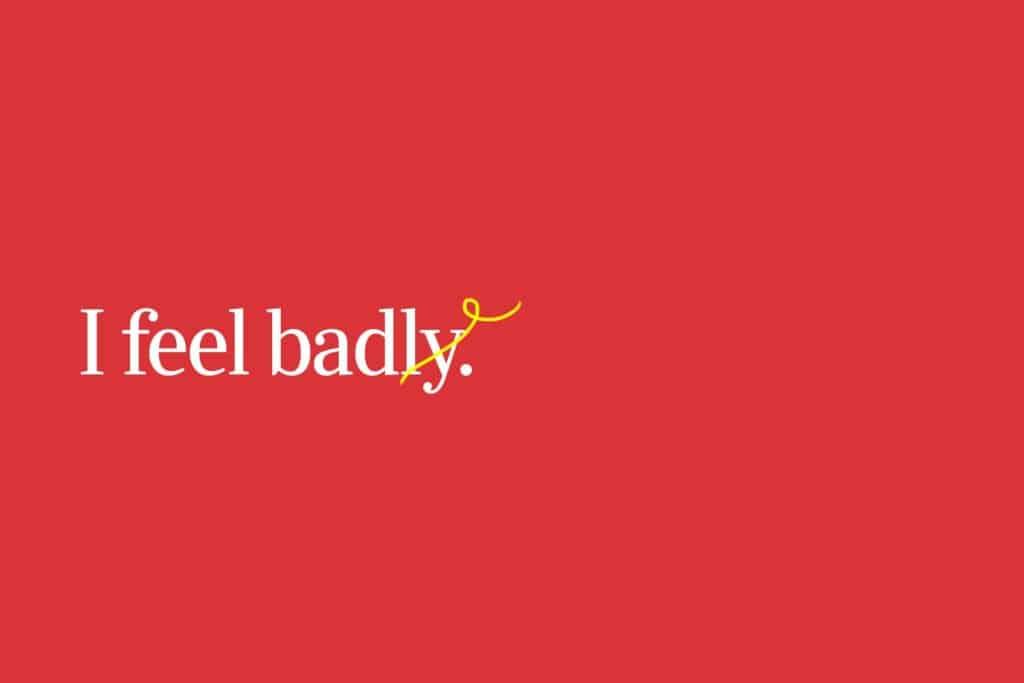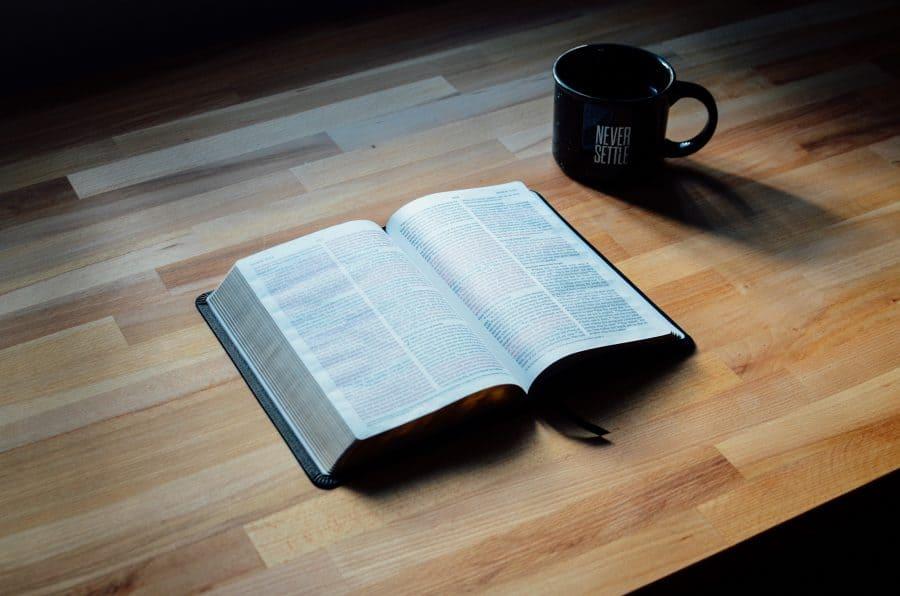If you think that telling the difference between bad and badly is freaking easy, this article is a must-read to you. The difference here is more than just the suffix ‘ly’, more than just the difference between an adjective and an adverb.
Read more
- Customer and Client: Are They Really the Same?
- Lake or Pond – Are You Sure?
- Farther and Further – What is the difference?
Before exploring the difference between bad and badly, we should have a good grasp of each of these words.
Bad
1 Bad as an adjective
In general, bad /bæd/ means something ‘not good’. But not everything ‘not good’ can go with bad.
If something is unpleasant and causes you difficulties or harm, it’s bad.
Ex:
- We can’t have a picnic at the park this morning because of the bad weather.
- Can’t imagine that she received bad news from her mom at her birthday.
Sometimes, bad is used to assess the quality of something. If sth is bad, its quality is too low or not acceptable.
Ex:
- Peter’s bad manners ruined his mom’s birthday party.
- The waiters’ attitude was really bad.
In moral aspects, bad goes with people or actions to describe them as evil or unacceptable.
Ex:
- Laura has never done bad things in her life.
- Don’t judge whether a person is good or bad by just basing on how he or she treats you.
You can use bad to describe sth that causes you physical or emotional pain or your experience of it.
Ex:
- The cold weather caused her a bad cough.
- She is no longer able to go mountain-climbing because of her bad legs.
Plus, foods can be bad too. But bad doesn’t mean ‘evil’ here. Instead, it refers to a state of food – being decayed. If food is decayed and not safe to eat anymore, you can use the phrase go/ turn (v) + bad or be/ smell/ taste/ look (v) + bad to describe it.
Ex:
- The hotter the weather is, the faster the foods go bad.
2 Bad as a noun
When used as a noun, bad /bæd/ is defined as things or events that are not good or are morally wrong. Despite referring to many things, bad is an uncountable noun.
Ex:
- It’s my bad for forgetting to remind you to go to the meeting.
3 Bad as an adverb
Besides being a noun, and an adjective, bad /bæd/is also an adverb. But not as you think, it doesn’t mean ‘in a bad or evil way‘. As an adverb, bad means very much. We use bad to emphasize the degree/ level of an action or a state of sth.
Ex:
- What you said to me hurted me so bad.
NOTE
In American English, bad is only used as an adjective.
Badly
Badly /ˈbæd.li/ is the adverb form of bad (a). So you can somehow guess the meanings of badly based on its relation with bad (a).
You can define badly as in a way that is bad. But to be more specific, badly means in a severe or harmful way; in a way that is not acceptable; in a way that is not of good quality.
Ex:
- She was badly injured in the accident.
- The event was badly organized.
- I can’t believe Roger behaved so badly like that.
In addition, badly has another meaning that doesn’t relate to bad, which is very much.
Ex:
- The organization is badly in need for volunteers.
Difference between Bad and Badly
1 Word class
Bad is mostly used as an adjective, while badly is an adverb. The difference between bad and badly in word class literally leads to differences in meanings and roles in a sentence between bad and badly.
- Bad (a): before nouns, after nouns, after linking verbs, etc.
- Badly (adv): before adjectives, after verbs (in active voice), before verbs (in passive voice), etc.
Note
When used as an adverb, bad is informal for badly, but it has the only meaning of very much. Furthermore, bad can only be used in active voice, while badly is used in both active and passive voice.
Ex:
- I want that car so bad.
= I want that car so badly.
- She was badly injured in the accident.
= She was bad injured in the accident.
2 When being after linking verbs ‘taste, look, smell, and feel’
Taste, look, smell and feel are 4 in a large number of verbs that can be both stative and action verbs. However, there are only 4 of them entering our discussion as they can go with bad and badly (this is the collocation matter).
Both bad and badly are used after taste, look, smell and feel, but they express different meanings. This part confuses most of us when trying to tell the difference between bad and badly.
Firstly, let’s start with these 2 examples:
- I feel bad about having to say this.
- He feels badly towards himself as he thinks people underestimate him.
Do you spot the difference between bad and badly? Why do I use feel bad in the first example instead of feel badly, and vice versa?
Here’s the answer you are looking for:
- In the first example:
- Feel (v) is used with the meaning of to experience something emotional to express the feeling of the subject – a bad feeling.
- With this meaning, feel plays as a role of a stative verb. And we cannot follow a stative verb with an adverb (obviously an adverb cannot describe a state of sth), so we choose bad.
- In the second example:
- Feel (v) is used with the meaning of to have a particular opinion or attitude towards something.
- We can easily tell from the meaning that feel is not a stative verb in this case, as it doesn’t express a state of anything. In this example, feel is an action verb. And only an adverb can follow an action verb, so we choose badly.
- A more easy-to-understand explanation about why we use feel badly instead of feel bad is the structure ‘feel bad about sth’, not ‘feel bad towards sth’. So we choose badly in this case.
But how to tell whether feel/ taste/ look/ smell is a stative verb or an action verb in a specific sentence? Well, the only way is to make sure that you understand the meanings of these words in the concepts of the sentences.

In conclusion, in order to know whether to use bad or badly after feel/ taste/ smell/ look, we need to know if it is a stative verb or an action verb:
|
Self-check quiz
Before skipping this blog, you should spend a little amount of time to do these 5 quizzes as a quick revision for what you have learned, and also to better understand the difference between bad and badly.
Choose the correct word: bad or badly?
- I feel bad/ badly towards his point of view.
- This dish tastes really bad/ badly.
- I feel the breeze bad/ badly as my skin is really insensitive.
- To my opinion, Vietnamese shrimp paste smells really bad/ badly.
- The model looks bad/ badly in that outfit.
Key:
- badly
- bad
- badly
- bad
- bad
Did you answer it all correctly? Don’t worry if you didn’t score 5/5 as it’s just a self-check exercise. You can scroll up to make a revision and scroll down to do the quizzes again. If you want to find out more confusing words in English like bad and badly, download this free Confusing words ebook of eJOY.














